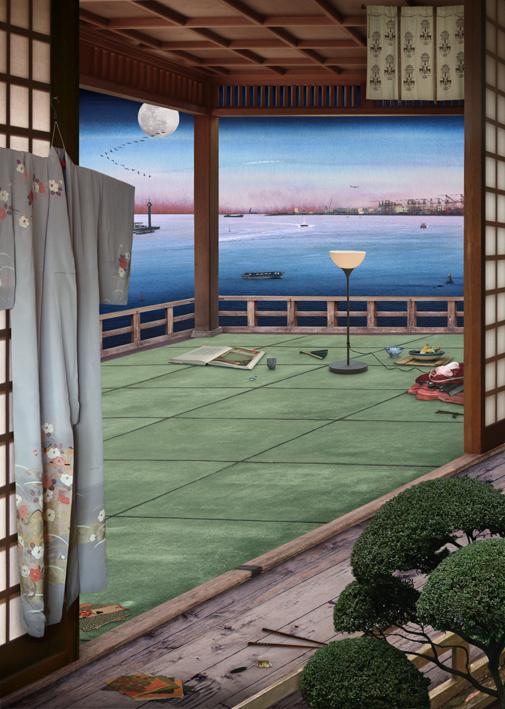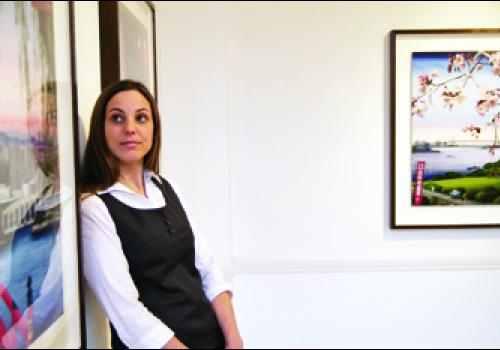Emily Allchurch’s Japanese Lightboxes: Reverent and Thoughtful Contemporary Art
Contemporary art often references older, classical art. Such references make the contemporary artworks more interesting, they trigger stronger emotional response. For me, Emily Allchurch is one of few artists who go even further: her works are not only valuable on their own, they make the reference art (even) more valuable, more interesting; they make us see what we looked at before, without really noticing it. I find such caring tribute very respectful, very polite, both intellectually and visually pleasing.
Find 10 Differences
I have visited “Emily Allchurch In the Footsteps of a Master” exhibition by chance, on the first day of its opening. It is very small, just one room. A dozen lightboxes from Allchurch’s Tokyo Story and Tokaido Road series hang on the walls. The reference works, woodprints by the 19th century Japanese printmaker Hiroshige, are in the boxes in the centre of the room. Have you ever tried to spot the differences between two similar pictures? Such puzzles are often given to children. Emily Allchurch’s Japanese lightboxes offer us a version for the grown-up lovers of art and culture.


Let us compare Hiroshige’s woodprint #82 from his Tokyo series and Allchurch’s Tokyo lightbox #4. They are very much alike: the moons are identical, and so are the birds, and the design of the room is very similar (green tatamy, wood, paper). But there are many differences:
- The boats are fewer and they are more modern.
- There is a modern cityscape at the background.
- The shadow of a courtesan is no longer on the left hand side of the foreground.
- Her kimono is no longer on the floor, but on a hanger.
- The lantern is replaced by a lamp similar to £5.99 Argos classics.
What else? Your turn.
By the way, the book on the floor in Allchurch’s work is a catalogue of Hiroshige’s woodcuts – I find this very touching.
Praise of Lightboxes

I would like to praise the choice of the media. Again, few artists care not only about creating a great artwork on its own, but also an artwork that adds value to the space which wall it adorns. Emily Allchurch’s lightboxes (transparencies on LED boxes) are a glorious exception of this rule. Firstly, as the name suggests, they double as a source of light; as you would certainly agree, there is no such thing as too much light. Secondly, they offer a window into another world, thus extending the space where they are exhibited. I think this is a great idea, and it is a shame that it is not exploited more frequently; I have only seen something similar in Pantone hotel in Brussels, Belguim (as a standard room lighting!). Last but not least, this type of artwork is industrially reproducible without the loss of authenticity, which makes it contemporary in the best meaning of the word: more democratic, and more accessible; making more people happy.
The Artist
Manchester exhibition is the first, and certainly not the last, UK solo exhibition of Emily Allchurch in a public museum. I have already seen her work; it was in the Royal Academy, London, during 2014 Summer Exhibition (special thanks to La Fée Culturelle for taking me there!) Emily Allchurch is a contemporary (b. 1976) British artist; she is educated, living and working in London.


Additional Information
- Visit Manchester exhibition page.
- Read Emily Allchurch’s interview.
- Visit the official website of Emily Allchurch.
- Visit the Tate page of Ms Allchurch.
- Read the detailed analysis of Allchurch’s Tokyo series by Francis Hodgson.
- Learn more about the Hiroshige’s print Moon-Viewing Point No. 82 from One Hundred Famous Views of Edo.
Leave a Reply